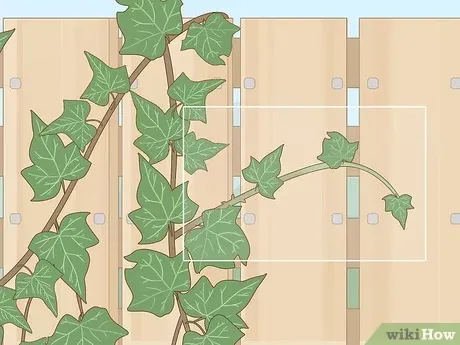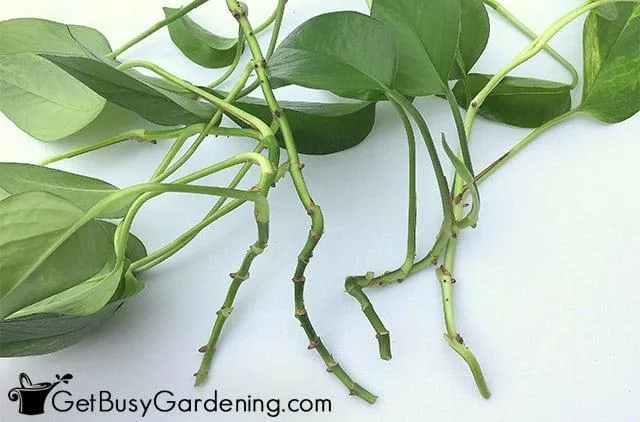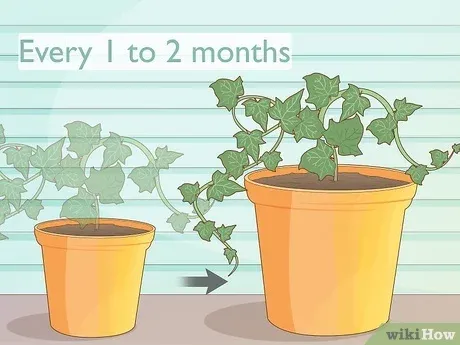All You Need to Know About Propagating Ivy
If you’ve searched how to propagate ivy, you’ve come to the right place. Ivy is a beautiful yet hardy plant that can be propagated in several easy ways. In this in-depth guide, I’ll answer all your questions about the various methods for propagating ivy and ensuring your success.
Why Propagate Ivy?
There are many benefits to propagating ivy yourself rather than purchasing new plants. For one, it saves you money since propagated plants are free once established. Ivy also makes an excellent ground cover or wall covering, so propagating allows you to expand your existing ivy faster. From my experience gardening, homegrown plants also tend to adapt better to their environment.
The Best Times to Propagate
The optimal seasons for propagating ivy depend on your climate and the type of ivy. In most regions, late winter to early spring works well as the growing season is just beginning. You can also propagate ivy in late summer or early fall. Avoid very hot or cold periods when the parent plant is under stress. Give cuttings time to develop roots before winter.
Propagating by Stem Cuttings
Stem cuttings are one of the easiest ways to propagate ivy. Here are the basic steps:
- Select 4-6 inch long stem cuttings from your parent ivy plants. Use clean, disease-free stems with at least 3-4 leaf nodes.
- Remove the bottom leaf or two from each cutting to direct energy into root growth.
- Dip the cut end in rooting hormone powder to encourage rooting.
- Plant the cuttings about 1-2 inches deep in a well-draining potting mix or seed starting mix.
- Mist the soil and cuttings daily and keep the soil moist but not soggy as roots develop.
- Place the potted cuttings in a warm spot with indirect sunlight. A greenhouse works well.
- Roots should start forming within 4-6 weeks. Transplant rooted cuttings when well established.
The key is maintaining consistent moisture. With the right care, stem cuttings will root reliably. I’ve found this method works great for English ivy and some other types.

Propagating by Layering
Layering lets you propagate ivy along trailing or climbing stems right where they lay on the ground or walls. It’s basically rooting a stem where it touches the ground. Here’s the layering process:
- Select a long, healthy stem that lies on or near soil.
- Remove lower leaves along a 6-8 inch section and scrape or wound the stem lightly.
- Pin or weigh the wounded section into the soil so it makes contact but doesn’t break.
- Cover with more soil and keep the soil moist as roots develop over weeks.
- Once a mass of roots is visible, cut the layered stem above and below to separate the new plant.
The wounded area triggers rooting. I’ve used layering successively to multiply ivy covering walls rapidly with minimal effort.
Propagating by Cuttings Under Cover
If you want to get a jump start on rooting cuttings, try using a cloche, mini greenhouse, or plastic bag. This high-humidity “mini greenhouse” effect speeds rooting without added heat. Follow these simple steps:
- Take 4-6 inch stem cuttings as usual and dip in rooting hormone.
- Plant the cuttings about 1/2 inch deep in a pot of seed starting mix.
- Cover the pot with an inverted plastic cloche, bag, or mini greenhouse.
- Keep the soil moist and roots should form within 2-4 weeks.
- Remove cover once cuttings are well rooted for transplanting.
The enclosed high-humidity environment tricks cuttings into focusing on roots first before developing leaves. In my experience, it doubles rooting success and cuts weeks off time.
Propagating by Division
If your ivy has formed a large clumping mass, you can divide and propagate portions in the ground or containers. Division works well for english, boston, and other clumping ivies. Here are the basic division steps:

- Carefully dig up the entire ivy clump while keeping the root ball intact if possible.
- Use a sharp knife or garden fork to divide the root mass into segments with 3-4 shoots each.
- Tease or shake apart any tangled roots.
- Replant divisions immediately in the garden or pots with fresh soil.
- Water well and keep moist until established.
Division revitalizes overgrown clumps and provides multiple new ivy starts. The rooted divisions transplant readily after a brief adjustment period.
Caring for Propagated Ivy Plants
No matter the propagation method, new ivy plants require some special care initially until their roots are well established:
- Transplant on a cloudy, cool day to reduce stress.
- Water regularly and don’t let the soil fully dry out. Ivy likes consistent moisture.
- Provide partial shade for transplants and gradually increase sun exposure.
- Fertilize monthly with dilute water-soluble plant food to aid growth.
- Protect new plants from intense sun, wind and frost until hardened off.
- Once rooted, ivy transplants can be planted outside or kept in containers.
With patience and TLC, your propagated ivy cuttings and divisions will thrive. The rewards are seeing your ivy multiply and fill in areas over time with little effort or cost.
In summary, stem cuttings, layering, and division are tried-and-true methods for propagating most common ivy varieties. Using a cloche or mini greenhouse considerably boosts success of rooting cuttings, basically tricking them into focusing on roots first. Proper care post-propagation ensures your homegrown ivy transplants establish successfully. Hopefully this gives you all the intel needed to propagate your own ivy! Let me know if you have any other questions.
Methods for Propagating English Ivy
| Method | Time of Year | Notes |
|---|---|---|
| Stem Cuttings | Spring to Summer | Take 6-8 inch cuttings, remove lower leaves, allow to dry and root in soil. |
| Layering | Spring to Summer | Bury a vine stem so a new plant grows from the buried section. |
| Division | Spring | Separate existing plants, making sure each division has roots. |
| Tissue Culture | Year Round | Grow new plants from lab-cultured plant tissues. |
| Seeds | Spring | Rare to propagate from seed, germination can take 1-2 years. |
FAQ
-
Can you propagate ivy from cuttings?
Absolutely. Taking cuttings is sort of a common and easy way to make new ivy plants basically. You’ll need to take stem cuttings in late spring or early summer, cuts about 4-6 inches long. Remove the bottom leaves leaving the top 2 sets. Stick the cuttings in potting mix and keep the soil moist for a few weeks. It really works great!

-
How long does it take for ivy cuttings to root?
Ivy cuttings will normally form roots within four to six weeks. However, it seems to sometimes take longer – maybe even up to eight weeks. The timing appears to depend on factors like plant variety, growing conditions, and possibly just plain luck. Supposedly keeping the soil consistently damp aids rooting. But who knows, might just be legend!
-
Can you propagate ivy from a leaf?
Strangely enough, you can root ivy from just a single leaf! It’s kind of amazing how resilient this plant is. Take a mature ivy leaf and lay it on moist soil, pressing it down gently. Within a few weeks, you may notice little plantlets starting to grow from the edges or where leaf joints were. Once they have a few sets of tiny leaves, you can transplant them to pots. Talk about easy!
-
How do you care for rooted ivy cuttings?
Once cuttings have formed nice little roots, you’ll want to gradually get them used to their new home. Move the pots to an area with lower light at first, then more sun over weeks. Water when the soil becomes slightly dry. You may need to stake tall strands so they don’t flop over. In one or two months, they should be ready to plant in garden beds or larger pots. What a journey, huh? Take good care of the little guys!
-
Can ivy be propagated from a vine?
Surely you can propagate ivy from existing vines. Simply select a section with healthy green growth and remove it from the parent plant. Look for nodes from which roots and leaves will form. Stick the cut vine into soil and keep the area moist. Within several weeks, you’ll probably start to see new tiny roots and leaf shoots growing. Presto, an ivy plant without doing any cuttings! Not too tricky if you ask me.
-
How often should you repot ivy propagated from cuttings?
Generally speaking, it’s best to repot ivy propagated from cuttings every 12-18 months. This gives the roots ample time to fill the pot but prevents them from becoming too pot bound. Signs it’s time for a new pot are when roots start sprouting from the drainage holes. You can also examine the root ball – if it’s solid with no soil in the center, it’s due for repotting. Make sure to select a pot only 1-2 inches larger to avoid disturbing the roots too much.

-
Can ivy be propagated from a fallen leaf?
You know, I’m not totally sure if ivy can truly be propagated from a fallen leaf lying on the ground. Apparently some plants like pothos and spider plants can form new plantlets from pieces of leaf. However, most sources say ivy needs a node with an internode section to then grow new roots and shoots. Maybe a leaf pressed directly in soil might attempt it, but chances seem slim. Who knows – might be worth a try for kicks!
-
How do I care for ivy once it’s established?
Once your propagated ivy plant is thriving, care is pretty easy-breezy. Water when the top inch of soil decreases slightly to maintain moisture. Feed monthly in spring and summer with a balanced houseplant fertilizer. Prune as desired to control size and shape. Wipe leaves periodically to remove dust. Move the pot periodically to encourage thick, branching growth. With a little TLC, your ivy will amaze you with how well it flourishes!
